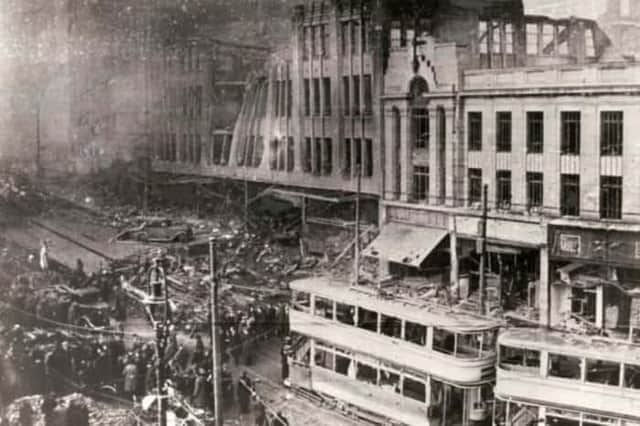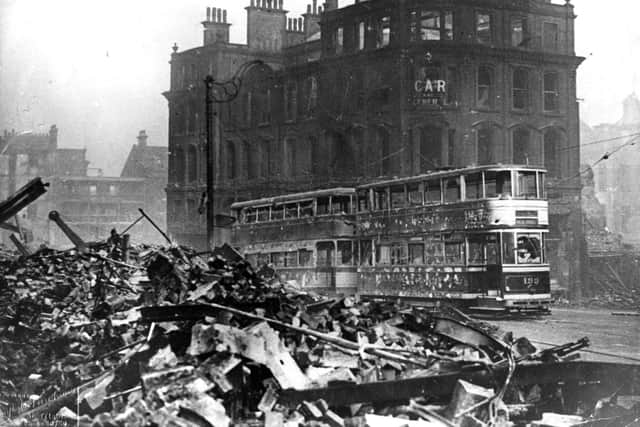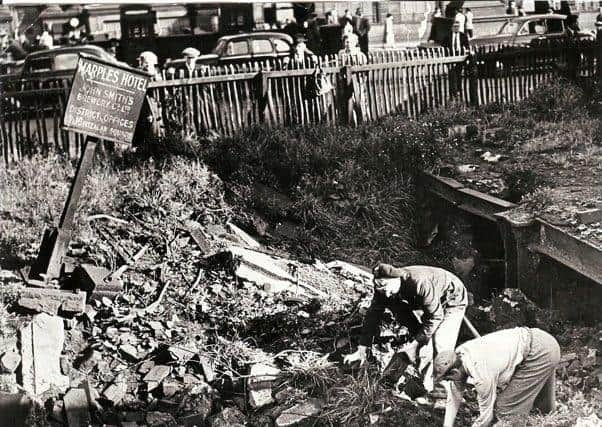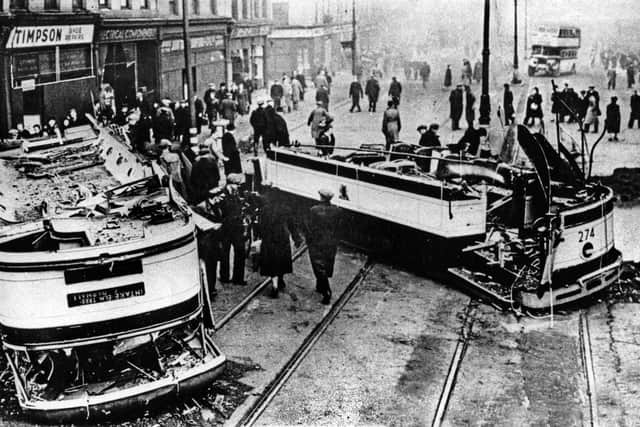A date has been set for the launch of a city centre trail remembering Sheffield Blitz bombings that killed or wounded over 2,000 people


Seventy-nine years ago, at the height of the Second World War in December 1940, the Luftwaffe mounted raids in Sheffield that killed and wounded over 2,000 people, and made nearly a tenth of the local population homeless. Much of the city centre was flattened and tens of thousands of properties were damaged.
In 2015 the Heritage Lottery Fund approved a grant worth more than £80,000 to launch a guided tour of the 12 most important locations connected with the Blitz, a project backed by The Star and borne out of a drive to raise awareness of the bombings' devastating impact.
Advertisement
Hide AdAdvertisement
Hide AdThe venture encountered delays, but in less than a fortnight's time the trail will be officially unveiled - and the gateway to the walk will be a department store that was destroyed in the attacks.


Atkinsons, on The Moor, was razed to the ground on December 12 and 13, 1940, and subsequently had to be rebuilt. A teddy bear nicknamed 'Mr Teddy Dodgson' was the last item sold before the shop was bombed - bought as a last-minute Christmas gift by the father of a girl called Brenda Spencer, the lucky toy is being brought back to the shop for the first time since the day it left to help celebrate the trail's inauguration.
Author Neil Anderson began campaigning for the guided walk almost a decade ago, following the release of his book Sheffield’s Date With Hitler. He thought the city was not doing enough to commemorate the Blitz, and teamed up with project manager Richard Godley and heritage interpreter Bill Bevan to submit the successful lottery bid, which brought in £81,300.
Locations on the trail will include the Central Library, which was the hub of the relief effort; the City Hall, which still bears shrapnel marks; Devonshire Green - the scene of one of the biggest losses of life - and Bramall Lane, which sustained extensive damage.
Advertisement
Hide AdAdvertisement
Hide AdNewly-commissioned signs are being put up, complemented by a mobile phone app that features the voices of eyewitnesses such as Sheffield's last surviving Blitz firefighter, Doug Lightning, who died in 2017.


Sheffield was a major arsenal for Britain during the war, so was an ideal target for the German air force, including places such as River Don Works which manufactured crankshafts and other vital components for Spitfire and Hurricanes.
Bombers had been seen over the city as early as August, when a device was dropped on Blackbrook Road, then another 11 days later on Sheaf Street.
However, the December attacks – codenamed ‘Crucible’ by the Germans – were the worst to hit the city.
Advertisement
Hide AdAdvertisement
Hide AdThe first of the two major bombings took place on a cold, moonlit night making conditions perfect for the Luftwaffe to see the buildings covered with a light dusting of snow.


In Attercliffe there was a ground fog which helped keep the East End factories largely clear of major damage. Unfortunately those living in the city centre and surrounding areas such as Sharrow, Nether Edge, Heeley, Broomhill and Woodseats were not so fortunate.
Shops had already started to close by 5pm meaning many residents could get home and prepare for the blackout. But when the air raid siren sounded two hours later, some did not rush to their Anderson Shelters as they had got into the habit of ignoring them.
The seven-storey Marples Hotel, on the corner of Flat Street and High Street, received a direct hit on December 12 from a 500kg bomb, which left around 70 people dead, and many unaccounted for. Its inclusion on the trail means the site will get a memorial befitting a war grave.
Advertisement
Hide AdAdvertisement
Hide AdElsewhere, one witness described The Moor as looking like a ‘tunnel of fire’ during the attack, but the nearby Town Hall remained largely unscathed other than having its windows blown in.
The all-clear was sounded at 4.17am, leaving buildings ablaze, overturned trams and cars on the streets, melted street lamps, and overhead power lines down.
Sheffield was not hit again until three days later, on a sunny December 15 at 6.50pm, when bombers started their run in Arbourthorne with Prince of Wales Road ‘lit up’ with fire bombs.
Many steelworks received hits, including Hadfields, Brown Bayleys and Steel, Peech and Tozer Ltd, although the damage was not serious enough to affect production.
Advertisement
Hide AdAdvertisement
Hide AdThe second night saw high-explosive bombs replaced with incendiaries, which caused numerous fires across the city. This raid was slightly smaller than the first, ending just hours later at 10.15pm.
Around 660 people were killed during the attacks, and 1,500 people injured. In total, 78,000 homes across the city received damage and six George medals were awarded to citizens for their bravery during the air raids.
An exhibition commemorating the Blitz has already been installed inside the National Emergency Services Museum at West Bar and has doubled the number of visitors there since it opened.
Alongside the lottery money, further donations came from Peter Stringfellow and Terry Deary - the creator of Horrible Histories - along with The Moor, Atkinsons and scores of individuals. The initiative also has the backing of Sheffield Council, Sheffield College, Sheffield 50 Plus, Museums Sheffield and South Yorkshire Aircraft Museum.
Advertisement
Hide AdAdvertisement
Hide Ad“It is very fitting that Atkinsons is set to become the gateway to the Sheffield Blitz Heritage Trail," said Neil Anderson. "They were one of its earliest supporters and few institutions played a bigger part in the Blitz story.”
Neil's new book, Countdown to the Sheffield Blitz, will go on sale at an event in the department store on Tuesday, December 10. The trail will be launched at 11am and Britain's Got Talent finalists the D-Day Darlings will perform from 12.30pm.